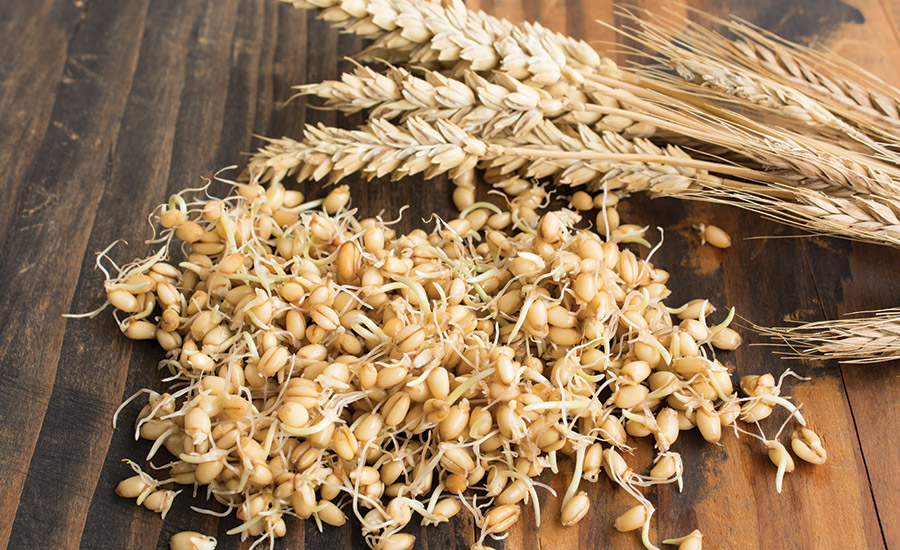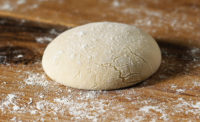After centuries of bread baking it is difficult to find or uncover a “new” ingredient or technique. However, American innovation and the local grain movement have provided a revived opportunity to explore the baker’s staple, grain, in the sprouted version. Sprouted grain and sprouted grain flour have made their appearance in domestic and commercial markets as the desire for healthy, handmade food continues to increase.
Sprouting grain is a simple process. Sprouting grain begins by creating an environment that mimics the requirements of grain that has just been planted and starts to grow. Whole, sound grain is rinsed and covered with water for 24–36 hours. Then it is drained, rinsed and allowed to sprout, a process that begins in another 24–36 hours. Frequent rinsing and warmer temperatures increase the rate at which grain sprouts.
Here is what happens: Once the whole grain is fully hydrated, naturally occurring amylase enzymes begin to convert starch stored in the endosperm into simple sugars that fuel the first days of growth until true leaves emerge and the plant begins to photosynthesize. The process is similar to fermentation where alpha-amylase converts starch into simple sugars used by yeast to release energy, carbon dioxide, organic acids and alcohol. This is also how malt is made, usually from barley.
Sprouting increases the availability of many nutrients and minerals including, but not limited to, vitamin C and vitamin E. Sprouting also deactivates phytic acid. Phytic acid chelates with minerals such as zinc, calcium and iron, which means it bonds with them in a way that makes it impossible for the minerals to be absorbed by the human body. Once phytic acid is neutralized, those minerals are bioavailable in the gastrointestinal tract. Sprouted grain is nutritious itself, but also makes it easier to extract more nutrition from the other foods we eat.
Most high-quality grain can be sprouted with the process described above. Wheat and all its subspecies, such as spelt, kamut, einkorn, etc., make reliable and tasty spouts. Rye is also sproutable. However, I often find that oats turn mushy without reliable sprouting action.
Sprouted grain can be consumed raw or cooked and makes a good option for ingredients such as bulgur and rice. It can also be used as an inclusion for hearth breads. It is good to run the sprouted grain through a meat grinder to break it before adding to the dough. The grinding ensures equal distribution and helps prevent whole grains migrating to the outer crust and getting too hard during the baking process. Bread can also be made solely with this sprouted grain mash and is known as Essene bread. The consistency is similar to other dense, whole-grain breads, such as Vollkornbrot. However, there is no flour in Essene bread. It is made with 100 percent sprouted grain and perhaps some salt. It is baked at a low temperature and becomes a slightly sweet loaf with a closed crumb full of fiber and nutrition.
The milling industry has responded to consumer interest by providing sprouted grain flours, packaged for both domestic and commercial use. Once the grain has been sprouted, it is dried and then milled into flour. The sprouting process changes the flour significantly. It requires much higher levels of hydration. Final doughs hydrated at 100 percent to 110 percent are not uncommon. The dough also changes substantially as it ferments, starting as sticky and weak dough but transforming to a manageable and fluffy dough after a couple of folds.
Note: Before sprouting grains in your facility, check with your health department codes to determine proper procedure for this process, especially if the sprouted grain will be consumed without a verified kill step.




